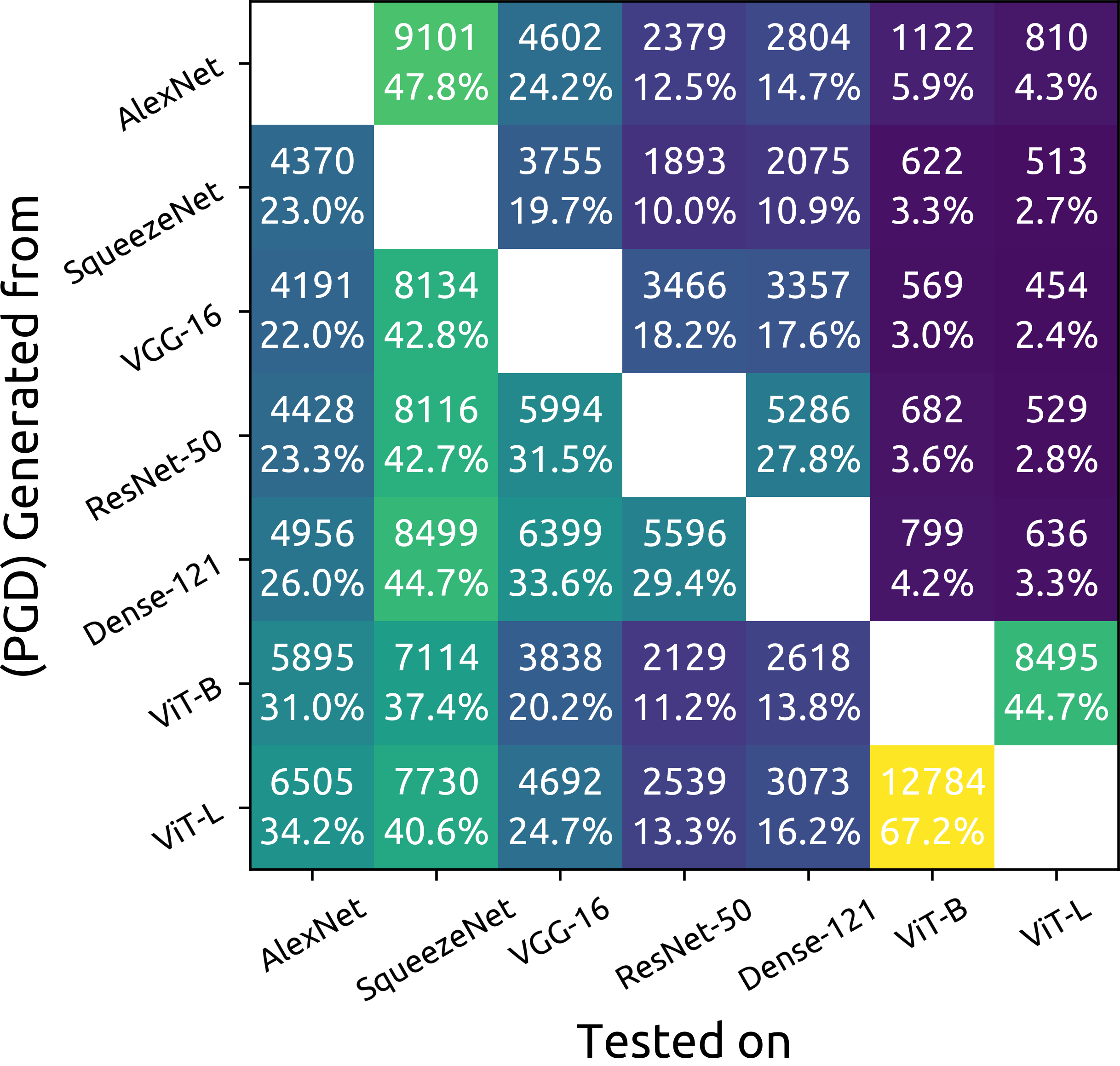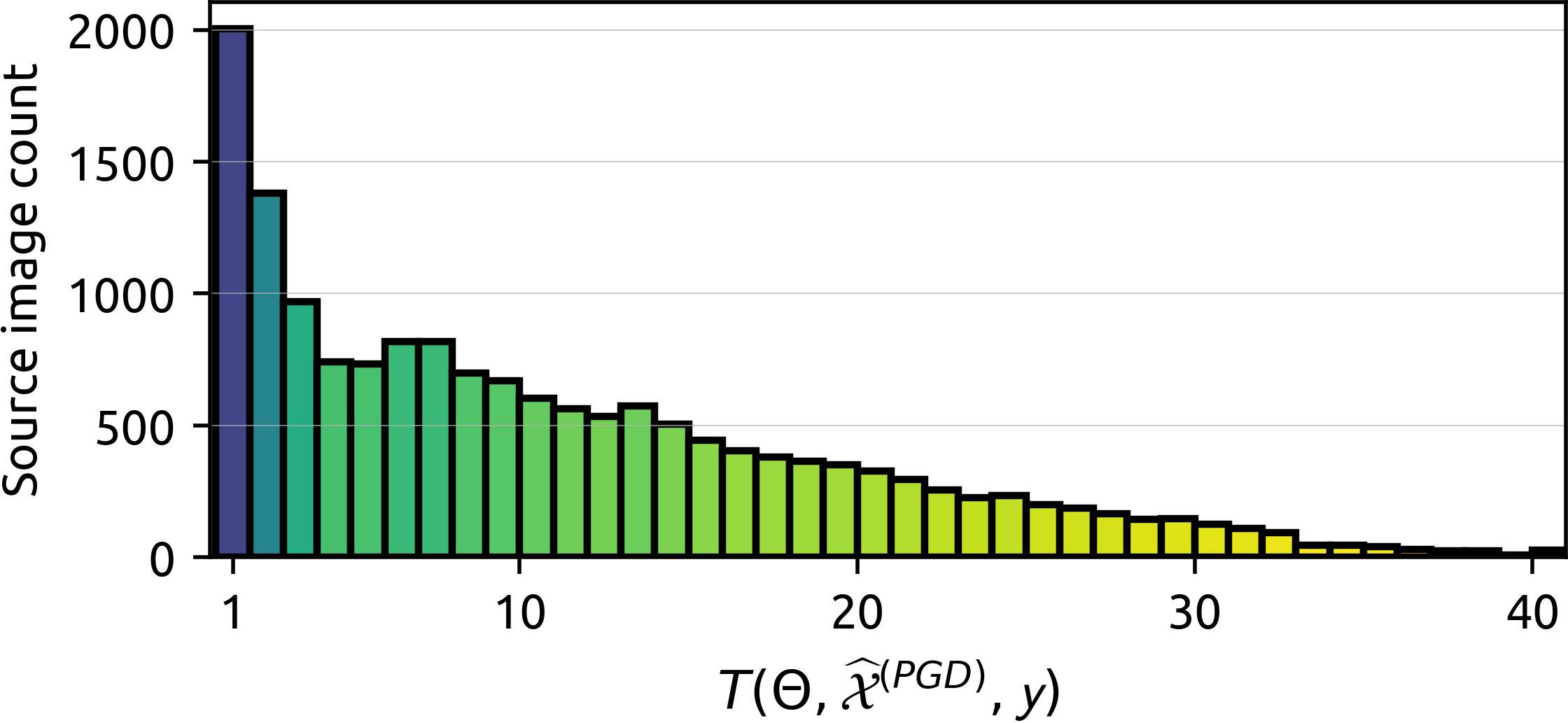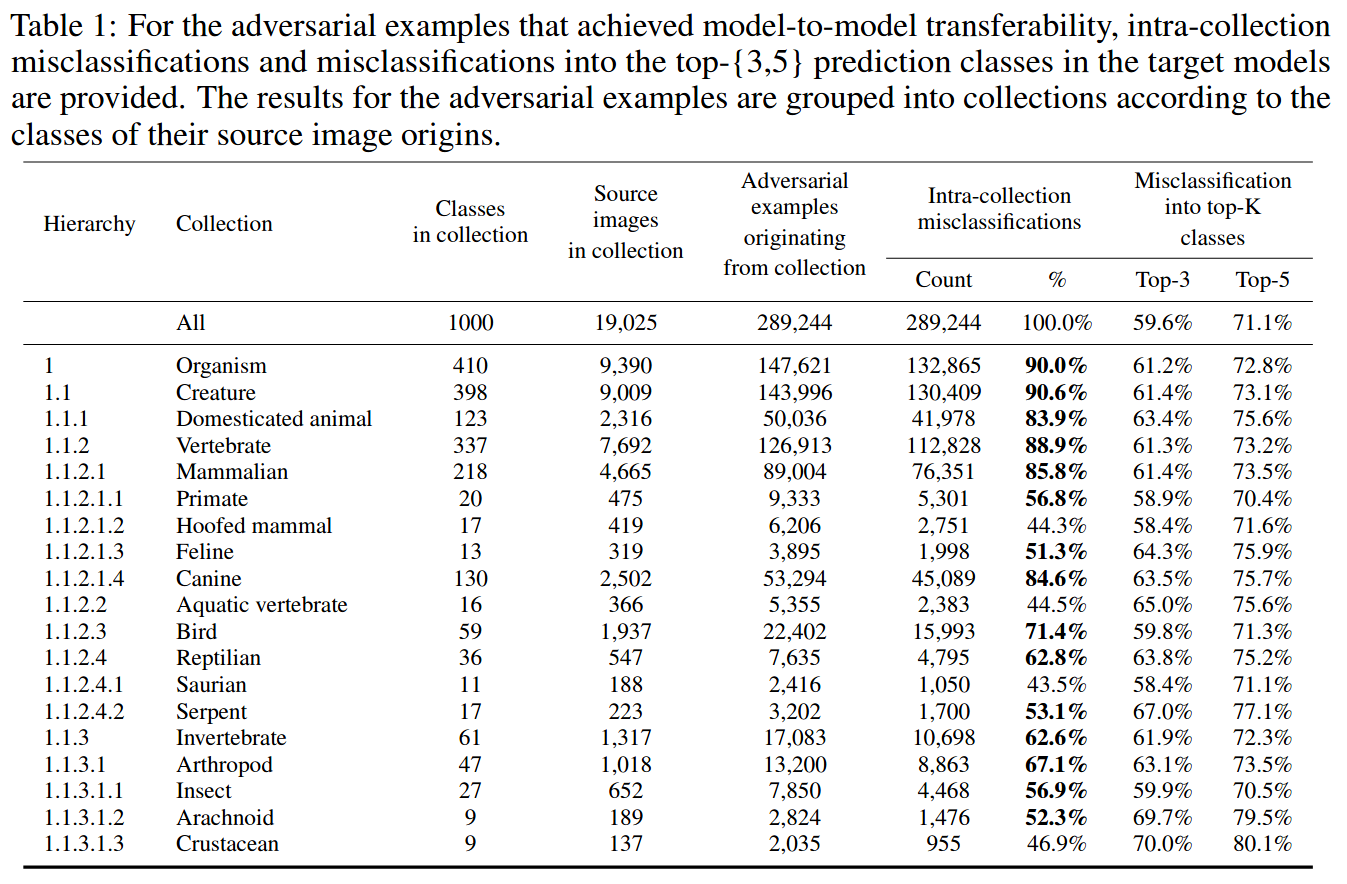ImageNet Adversarial Image Evaluation
This repository contains the code and some materials used in the experimental work presented in the following papers:
[1] Selection of Source Images Heavily Influences Effectiveness of Adversarial Attacks
British Machine Vision Conference (BMVC), 2021.
[2] Evaluating Adversarial Attacks on ImageNet: A Reality Check on Misclassification Classes
Conference on Neural Information Processing Systems (NeurIPS), Workshop on ImageNet: Past, Present, and Future, 2021.
Fragile Source images
Paper [1] TLDR: A number of source images easily become adversarial examples with relatively low perturbation levels and achieve high model-to-model transferability successes compared to other source images.
In src folder, we shared a number of cleaned source code that can be used to generate the figures used in the paper with the usage of adversarial examples generated with PGD, CW, and MI-FGSM. You can download the data here. Below are some of the visualizations used in the paper and their descriptions.
Model-to-model transferability matrix
Model-to-model transferability matrix can be generated with the usage of vis_m2m_transferability.py. This visualization has two modes, an overview one where only the transfer success percentage is shown and a detailed view where both the absolute amount and the percentage is shown. The visualization for this experiment is given below:
Source image transferability count
In the paper [1], we counted the model-to-model transferability of adversarial examples as they are generated from source images. This experiment can be reproduced with vis_transferability_cnt.py. The visualization for this experiment is given below:
Perturbation distribution
In the paper [1], we counted the model-to-model transferability of adversarial examples as they are generated from source images. This experiment can be reproduced with vis_transferability_cnt.py. The visualization for this experiment is given below:
Untargeted misclassification for adversarial examples
Paper [2] TLDR: Adversarial examples that achieve untargeted model-to-model transferability are often misclassified into categories that are similar to the category of their origin.
We share the imagenet hierarchy used in the paper in the dictionary format in imagenet_hier.py.
Citation
If you find the code in this repository useful for your research, consider citing our paper. Also, feel free to use any visuals available here.
@inproceedings{ozbulak2021selection,
title={Selection of Source Images Heavily Influences the Effectiveness of Adversarial Attacks},
author={Ozbulak, Utku and Timothy Anzaku, Esla and De Neve, Wesley and Van Messem, Arnout},
booktitle={British Machine vision Conference (BMVC)},
year={2021}
}
@inproceedings{ozbulak2021evaluating,
title={Evaluating Adversarial Attacks on ImageNet: A Reality Check on Misclassification Classes},
author={Ozbulak, Utku and Pintor, Maura and Van Messem, Arnout and De Neve, Wesley},
booktitle={NeurIPS 2021 Workshop on ImageNet: Past, Present, and Future},
year={2021}
}
Requirements
python > 3.5
torch >= 0.4.0
torchvision >= 0.1.9
numpy >= 1.13.0
PIL >= 1.1.7



